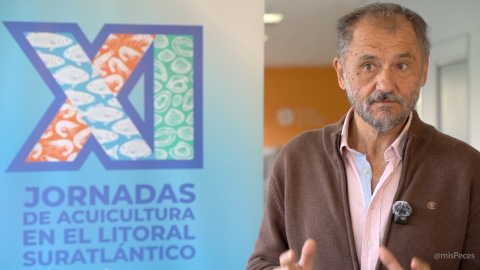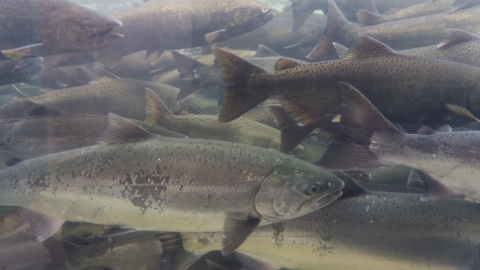 Pedro Cañavate |@misPeces
Pedro Cañavate |@misPeces
Restoring degraded marshlands areas can provide not only essential ecosystem services, but also a third pathway for producing marine biomass rich in omega-3 EPA and DHA and high-quality protein.
This is the core idea behind the pilot project being developed at the Caño de la Esparraguera, in the municipality of Trebujena, on the left bank of the Lower Guadalquivir, South of Spain. Funded through the EU EMFAF programme, the initiative aims to demonstrate that these ecosystems can generate net new food sustainably and with high nutritional value.
In an interview with misPeces, IFAPA El Toruño researcher Pedro Cañavate explained that the key lies in reconnecting estuaries and marshes to reactivate natural biogenic processes. “The idea is to obtain new production based on nutritionally rich phytoplankton, which supports the development of invertebrates and low-trophic fish species,” he said. “These organisms are not directly consumed by humans, but they are an important source of omega-3-rich oils and high-value proteins.”
The project area, located in the Caño de la Esparraguera, includes zones historically managed by WWF alongside other promoted by the Andalusian regional government. According to Cañavate, the regional potential is enormous: “On the left bank of the Guadalquivir there are roughly 6,000 hectares that could be rehabilitated for this purpose. They would also function as refuge and feeding grounds for wildlife, including many threatened species.”
This approach could be replicated across eutrophic marshlands worldwide. In fact, 75% of global marshes are currently degraded. “If the planet were to recover just 30% or 40% of the marshlands that have been transformed, we could generate the equivalent of all the fishmeal currently captured,” Cañavate noted.
Preliminary data point to notable yield. “We are talking about between 800 and 900 grams of carbon per square metre, which could translate into around a kilo and a half of biomass per square metre,” he explained. “These are significant amounts, comparable to a rice field, but with products of far greater nutritional value.”
The biomass originates from invertebrates such as copepods and isopods, which concentrate high-value microalgae. Industrial processing could result in two main products: oils rich in omega-3 – highly sought after for their nutritional and functional properties – and protein extracts with applications in human consumption, aquaculture and nutraceuticals.
To achieve this, Cañavate stresses the need for a “mindset shift” and for these organisms to be viewed as processable raw materials: “We must stop thinking in terms of direct consumption and more towards a more advanced stage, where we add value through processing.”
A key concept is that of net food: new production that does not compete with existing sectors, but emerges from the restoration of a degraded ecosystem. This aligns with the international drive towards more circular models within the blue economy.
“It helps reduce greenhouse gases, relies on marine environments and captures carbon from the atmosphere. It fits fully within the concept of the blue economy,” said the researcher.
Scheduled to conclude at the end of 2026, this EMFAF-funded pilot not only seeks to prove technical and ecological feasibility, but also to open a replicable pathway for other regions with degraded marshlands. “We want this to serve as an example for marshes around the world,” Cañavate emphasized. It is a real opportunity to generate food, value and biodiversity, while restoring nature is process.”



